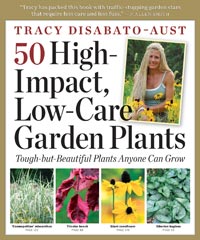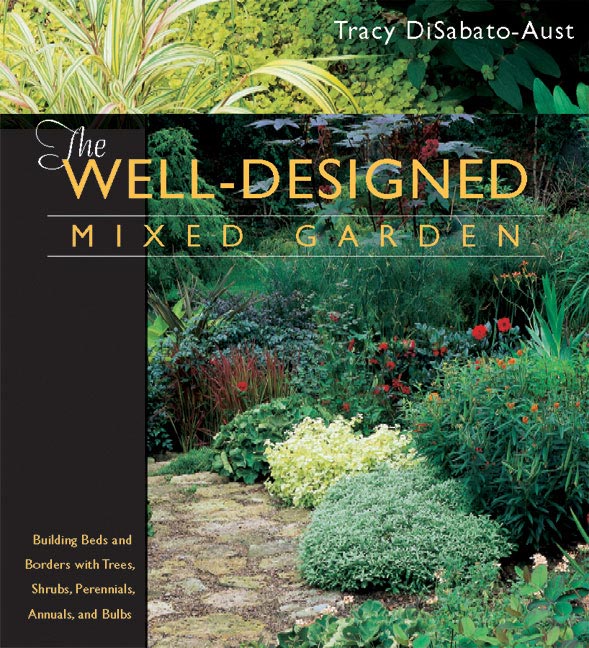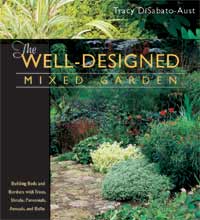 One of the most frequently asked questions I hear about garden design is “
One of the most frequently asked questions I hear about garden design is “ Where do I start?”. Any new venture… be it a new exercise program, a new writing project (blog?), or a new garden can cause us to freeze in our tracks. And revamping a pitiful existing garden can be even more overwhelming. So how can we get beyond the fear (Garden Design You are Not The Boss of Me!!) and enjoy this rewarding highly creative, artistic adventure? Any time we have a mapped out plan we seem to be able to “take on” whatever life throws us. Follow the steps below for success with your new or existing garden design. I go into great detail on this in Chapter 2 of The Well-Designed Mixed Garden .
Where do I start?”. Any new venture… be it a new exercise program, a new writing project (blog?), or a new garden can cause us to freeze in our tracks. And revamping a pitiful existing garden can be even more overwhelming. So how can we get beyond the fear (Garden Design You are Not The Boss of Me!!) and enjoy this rewarding highly creative, artistic adventure? Any time we have a mapped out plan we seem to be able to “take on” whatever life throws us. Follow the steps below for success with your new or existing garden design. I go into great detail on this in Chapter 2 of The Well-Designed Mixed Garden .
Evaluate your Site: Light? – What are the light conditions, sun/shade/part shade. Soil?-The “root” of the issue, 80% of all plant problems relate to poor soil. Test the soil for texture, nutrients as well as organic matter content. Moisture-Wet,Dry? Now what hardiness zone you are gardening in? Winds? Contour of Land? Microclimates? Existing vegetation?
Consider your Objectives – How much time do you have to garden/ do maintenance in the garden? Be HONEST! The garden should be comprised of 70% lower maintenance plants if you want a life outside the garden. (High-Impact/Low-Care Plants!!) What is your budget? What style is you or reflects your home/location to create a sense of place.
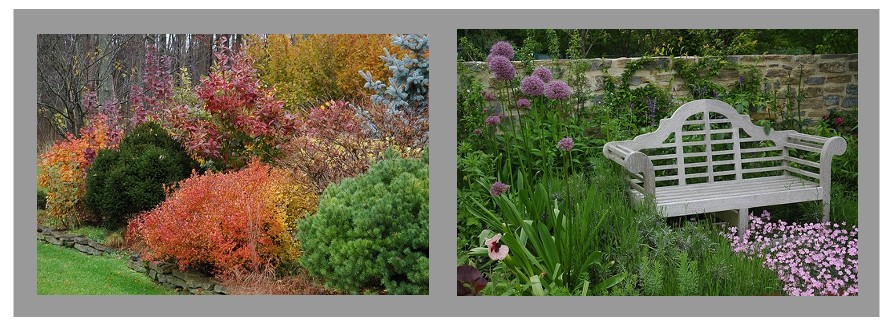
Where will the garden be located for best enjoyment: outside a prominent window? 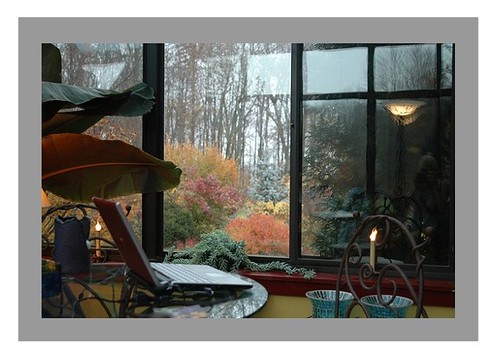 Will it be a free standing bed or will it be bordered by the house or a fence? How big should it be? (this goes back to how much time you have to work in the space—don’t get carried away with the size!!)
Will it be a free standing bed or will it be bordered by the house or a fence? How big should it be? (this goes back to how much time you have to work in the space—don’t get carried away with the size!!)
How will the Garden function? Will it be used for entertaining, meditation and at what time of the day? For cut flowers, fresh produce or to attract birds and butterflies? (photos below: attracting birds =Winterberry Holly/cut flowers=Limelight hydrangea)
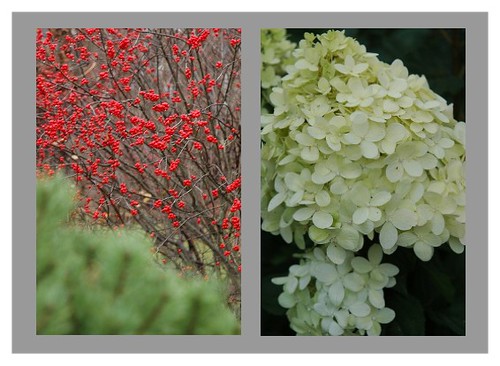
What will be your Color Choices? And consider Texture and Form! Do you want a limited color palette that will project a more sophisticated look or perhaps a bit of every color which is more playful and great for lively entertaining spots. Will cool colors be selected for a peaceful feeling and to make the area appear larger or will hot colors rule to create a more “up-beat” tone? (Photos: hot=Blue Billows Hydrangea, autumn color/Cool=Endless Summer Hydrangea) Will fine textures dominate to create softness or will bold textures and forms be selected to make an architectural statement?

Pick a Peak Season of Interest
Even though a well-designedmixed garden will have a long season of interest if colors, textures and plants are properly selected it’s still important to pick a season for each border or garden—when it will really “sing!”. For example you may want a winter garden to enjoy from a window or a spring border that you walk by daily. Once you have your season then go for plants that look their best at that time of the year. (photo: autumn/winter peak season of interest for this shrub border)
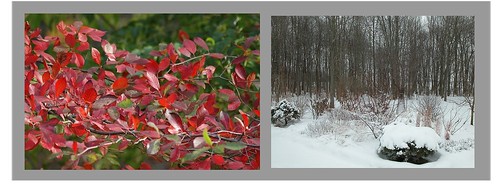
Plant Selection The moment we’ve all been waiting for…but see how many things we had to consider before this step. Contrary to walking into a garden center, impulsively selecting a cart-load of plants, and then coming home and walking around the garden wondering where they sho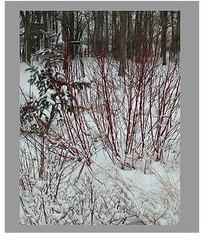 uld go (we all do this and support groups will soon be forming!!!). Remember FOCUS!! All of the above points come into play in selecting the right plants for the site, based on your maintenance needs, function, color/texture/form choices and season of interest. (Photos: For this border I selected plants for autumn/winter interest such as Midwinter Fire Dogwood and a Black Tupelo stands gracefully just outside the border.
uld go (we all do this and support groups will soon be forming!!!). Remember FOCUS!! All of the above points come into play in selecting the right plants for the site, based on your maintenance needs, function, color/texture/form choices and season of interest. (Photos: For this border I selected plants for autumn/winter interest such as Midwinter Fire Dogwood and a Black Tupelo stands gracefully just outside the border.
You can do this—have fun with the process!!!


 Recently I had the opportunity to be a guest on Joe Lamp’l’s
Recently I had the opportunity to be a guest on Joe Lamp’l’s




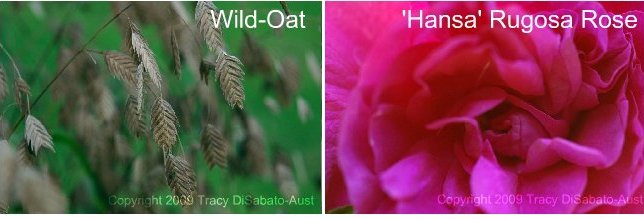
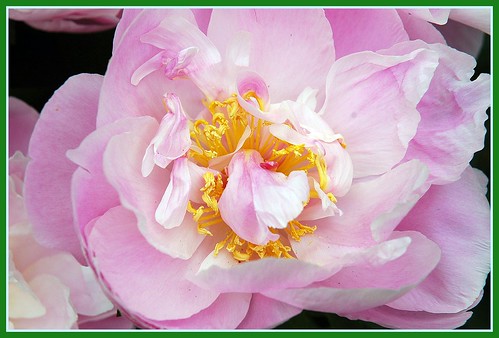 I’m often asked for publishing advice from people on gardening as well as non-gardening topics. I’m by no means the authority but I share what has worked for me with my three books…First you must truly believe in your topic and have a passion for it as well as lots of firsthand experience. Writing articles for various magazines, newsletters and even blogging is often a good way to start with topics you are interested in writing about in book form. See the response from these other venues first–learn what “issues” people are drawn to so you can accentuate those in your writing/marketing angle. Speaking on the topic is also a great way to make yourself the “expert” on it as well as to accurately learn people’s responses and see your weaknesses on the topic. Remember you have to learn in order to teach. Research you topics extensively and learn from other’s success and failure. What would make your book a contribution that’s not been offered before? There is a lot of ground work that goes down first before the book can be written. Try to find a publisher who will accept your proposal before you write the whole book or consider the pros/cons of self publishing. Once you commit to the book follow your dream and remain indomitable through the process. Then market with abandon, as it’s no use to have a book and a message to share if no one reads it!! Good Luck and Happy Writing!
I’m often asked for publishing advice from people on gardening as well as non-gardening topics. I’m by no means the authority but I share what has worked for me with my three books…First you must truly believe in your topic and have a passion for it as well as lots of firsthand experience. Writing articles for various magazines, newsletters and even blogging is often a good way to start with topics you are interested in writing about in book form. See the response from these other venues first–learn what “issues” people are drawn to so you can accentuate those in your writing/marketing angle. Speaking on the topic is also a great way to make yourself the “expert” on it as well as to accurately learn people’s responses and see your weaknesses on the topic. Remember you have to learn in order to teach. Research you topics extensively and learn from other’s success and failure. What would make your book a contribution that’s not been offered before? There is a lot of ground work that goes down first before the book can be written. Try to find a publisher who will accept your proposal before you write the whole book or consider the pros/cons of self publishing. Once you commit to the book follow your dream and remain indomitable through the process. Then market with abandon, as it’s no use to have a book and a message to share if no one reads it!! Good Luck and Happy Writing! One of the most frequently asked questions I hear about garden design is “
One of the most frequently asked questions I hear about garden design is “ Where do I start?”. Any new venture… be it a new exercise program, a new writing project (blog?), or a new garden can cause us to freeze in our tracks. And revamping a pitiful existing garden can be even more overwhelming. So how can we get beyond the fear (Garden Design You are Not The Boss of Me!!) and enjoy this rewarding highly creative, artistic adventure? Any time we have a mapped out plan we seem to be able to “take on” whatever life throws us. Follow the steps below for success with your new or existing garden design. I go into great detail on this in Chapter 2 of The Well-Designed Mixed Garden .
Where do I start?”. Any new venture… be it a new exercise program, a new writing project (blog?), or a new garden can cause us to freeze in our tracks. And revamping a pitiful existing garden can be even more overwhelming. So how can we get beyond the fear (Garden Design You are Not The Boss of Me!!) and enjoy this rewarding highly creative, artistic adventure? Any time we have a mapped out plan we seem to be able to “take on” whatever life throws us. Follow the steps below for success with your new or existing garden design. I go into great detail on this in Chapter 2 of The Well-Designed Mixed Garden .
 Will it be a free standing bed or will it be bordered by the house or a fence? How big should it be? (this goes back to how much time you have to work in the space—don’t get carried away with the size!!)
Will it be a free standing bed or will it be bordered by the house or a fence? How big should it be? (this goes back to how much time you have to work in the space—don’t get carried away with the size!!)


 uld go (we all do this and support groups will soon be forming!!!). Remember FOCUS!! All of the above points come into play in selecting the right plants for the site, based on your maintenance needs, function, color/texture/form choices and season of interest. (Photos: For this border I selected plants for autumn/winter interest such as Midwinter Fire Dogwood and a Black Tupelo stands gracefully just outside the border.
uld go (we all do this and support groups will soon be forming!!!). Remember FOCUS!! All of the above points come into play in selecting the right plants for the site, based on your maintenance needs, function, color/texture/form choices and season of interest. (Photos: For this border I selected plants for autumn/winter interest such as Midwinter Fire Dogwood and a Black Tupelo stands gracefully just outside the border. Valentine’s Day is approaching — candy is bad for your waistline, cut flowers die, jewelry is expensive, and picking a perfume is a risk—Give a gift your honey can sink their teeth into without guilt and one that will last forever,yet not break the bank!! Give a gardening book!!
Valentine’s Day is approaching — candy is bad for your waistline, cut flowers die, jewelry is expensive, and picking a perfume is a risk—Give a gift your honey can sink their teeth into without guilt and one that will last forever,yet not break the bank!! Give a gardening book!!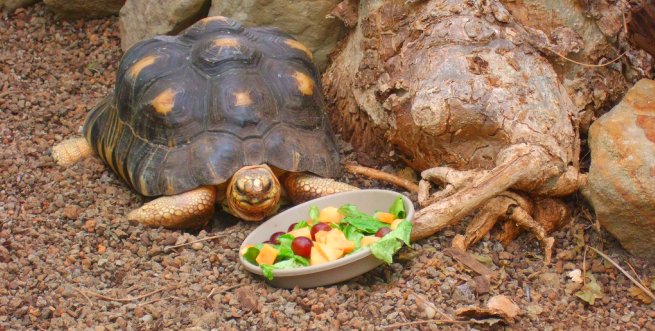
 I was also “over- the- top impressed” with The Cleveland Botanical Garden’s cool urban youth program call Green Corps. It’s a work/study program for students aged 15-18 who earn as they learn by transforming vacant lots into flourishing urban farms. The students grow fruits, vegetables and flowers while also learning job and leadership skills, while being proactive in creating a healthier greener community for themselves and their neighbors. Students learn about sustainable urban farming, ecology, and healthy eating and growing as well as basics of entrepreneurship and sales. They sell their produce at farmer’s markets and bottle their own Ripe From Downtown® salsa. Let me tell you first hand it’s delicious!! Check out the Cleveland Botanical Garden at
I was also “over- the- top impressed” with The Cleveland Botanical Garden’s cool urban youth program call Green Corps. It’s a work/study program for students aged 15-18 who earn as they learn by transforming vacant lots into flourishing urban farms. The students grow fruits, vegetables and flowers while also learning job and leadership skills, while being proactive in creating a healthier greener community for themselves and their neighbors. Students learn about sustainable urban farming, ecology, and healthy eating and growing as well as basics of entrepreneurship and sales. They sell their produce at farmer’s markets and bottle their own Ripe From Downtown® salsa. Let me tell you first hand it’s delicious!! Check out the Cleveland Botanical Garden at 
![Reblog this post [with Zemanta]](http://img.zemanta.com/reblog_e.png?x-id=5d7d9a51-da96-4481-ad93-e074b409782c)
 The January 2009 lectures launching 50 High-Impact, Low-Care Plants have been fun and exciting. I kicked things off with the Landscape Contractors Association in Maryland. We had 3.5 hours to discuss Tough But Beautiful Plants and the importance of “spreading the word” of all the mental, physical, and emotional benefits of gardening with dynamic yet sustainable plants. I flew from Maryland to West Virginia to talk with the West Virginia Nursery and Landscape Association. The hour flew by there and then I went to Taylor Books, Charleston, WV for a signing. What a treat to find out that the owner Ann Saville had an interesting rooftop garden featuring several of the “50 Plants” in my new book. (see photos). A day later I was back in Columbus Ohio for the annual P.L.A.N.T. day sponsored by the Perennial Plant Association, The Ohio State University Master Gardener Volunteers, and my mentor Steven Still (see photo). What an honor to launch this new book as I had launched The Well-Tended Perennial Garden 11 years ago and The Well-Designed Mixed Garden 6 years ago. Lots of my long time gardening friends and associates attended the event and it was great to share in the joy of this new topic. The following morning I spoke at The Ohio State University Nursery Short Course and again it was a treat to be with so many colleagues. On Friday of that week I was the keynote speaker for The Western New York State Nursery and Landscape Association in Hamburg NY. Attendance was good despite yet more snow overnight and it was great to have not only professionals but numerous students in the audience. The Buffalo News ran a nice article that morning (see inset) as did GardenRant.com in the days that followed. I’d like to thank all the sponsors of these talks for their support and commitment to education.
The January 2009 lectures launching 50 High-Impact, Low-Care Plants have been fun and exciting. I kicked things off with the Landscape Contractors Association in Maryland. We had 3.5 hours to discuss Tough But Beautiful Plants and the importance of “spreading the word” of all the mental, physical, and emotional benefits of gardening with dynamic yet sustainable plants. I flew from Maryland to West Virginia to talk with the West Virginia Nursery and Landscape Association. The hour flew by there and then I went to Taylor Books, Charleston, WV for a signing. What a treat to find out that the owner Ann Saville had an interesting rooftop garden featuring several of the “50 Plants” in my new book. (see photos). A day later I was back in Columbus Ohio for the annual P.L.A.N.T. day sponsored by the Perennial Plant Association, The Ohio State University Master Gardener Volunteers, and my mentor Steven Still (see photo). What an honor to launch this new book as I had launched The Well-Tended Perennial Garden 11 years ago and The Well-Designed Mixed Garden 6 years ago. Lots of my long time gardening friends and associates attended the event and it was great to share in the joy of this new topic. The following morning I spoke at The Ohio State University Nursery Short Course and again it was a treat to be with so many colleagues. On Friday of that week I was the keynote speaker for The Western New York State Nursery and Landscape Association in Hamburg NY. Attendance was good despite yet more snow overnight and it was great to have not only professionals but numerous students in the audience. The Buffalo News ran a nice article that morning (see inset) as did GardenRant.com in the days that followed. I’d like to thank all the sponsors of these talks for their support and commitment to education. I hope to share with you along the way some of the frequently asked questions from lecture participants as I’m sure they may be some of the same questions you have.
I hope to share with you along the way some of the frequently asked questions from lecture participants as I’m sure they may be some of the same questions you have.

